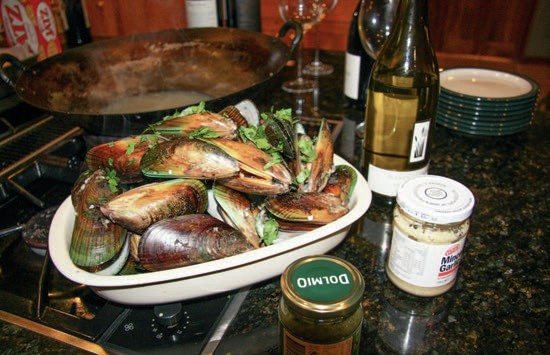NZ Fishing

Top: After being lightly steamed open, these mussels are about to be removed from the shell and tuned into fritters.

Bottom: Mussels steamed in garlic, pesto and white wine – delicious! Photo: Grant Dixon
our bays and harbours as a result of New Zealand’s agricultural intensification. This reduction in excess nutrients then lowers the potential for algal blooms and eutrophication (nutrient loading). In effect, more shellfish means cleaner water.
These same nutrients are part of what makes mussels so healthy and rich in minerals. Almost a complete food, Māori have long valued mussels as a staple of their saltwater pantry. According to Māori history, their ancestors towed long ropes of living mussels behind their waka on their journey to discover New Zealand over 700 years ago!
There are also potential multitrophic benefits of shellfish aquaculture that haven’t even been considered yet. As fishos, many of us will have visited a mussel farm to throw a line in, attracted by the reputation shellfish farms have for providing lots of big, healthy fish. The plentiful fishery surrounding these farms is likely the direct result of multi-trophic benefits: the farm attracts nutrients, which attract marine plants (seaweed and algae), which attract crustaceans, which attract all manner of fish species – acomplete mini ecosystem.
At Peter James’ mussel farm in the Coromandel, he reckons there are so many snapper there that it looks like an aquarium if you put your head under the water. “Forget the fancy lures,” Peter says. “We usually catch snapper on a piece of plain white plastic!”
– Jason Harman